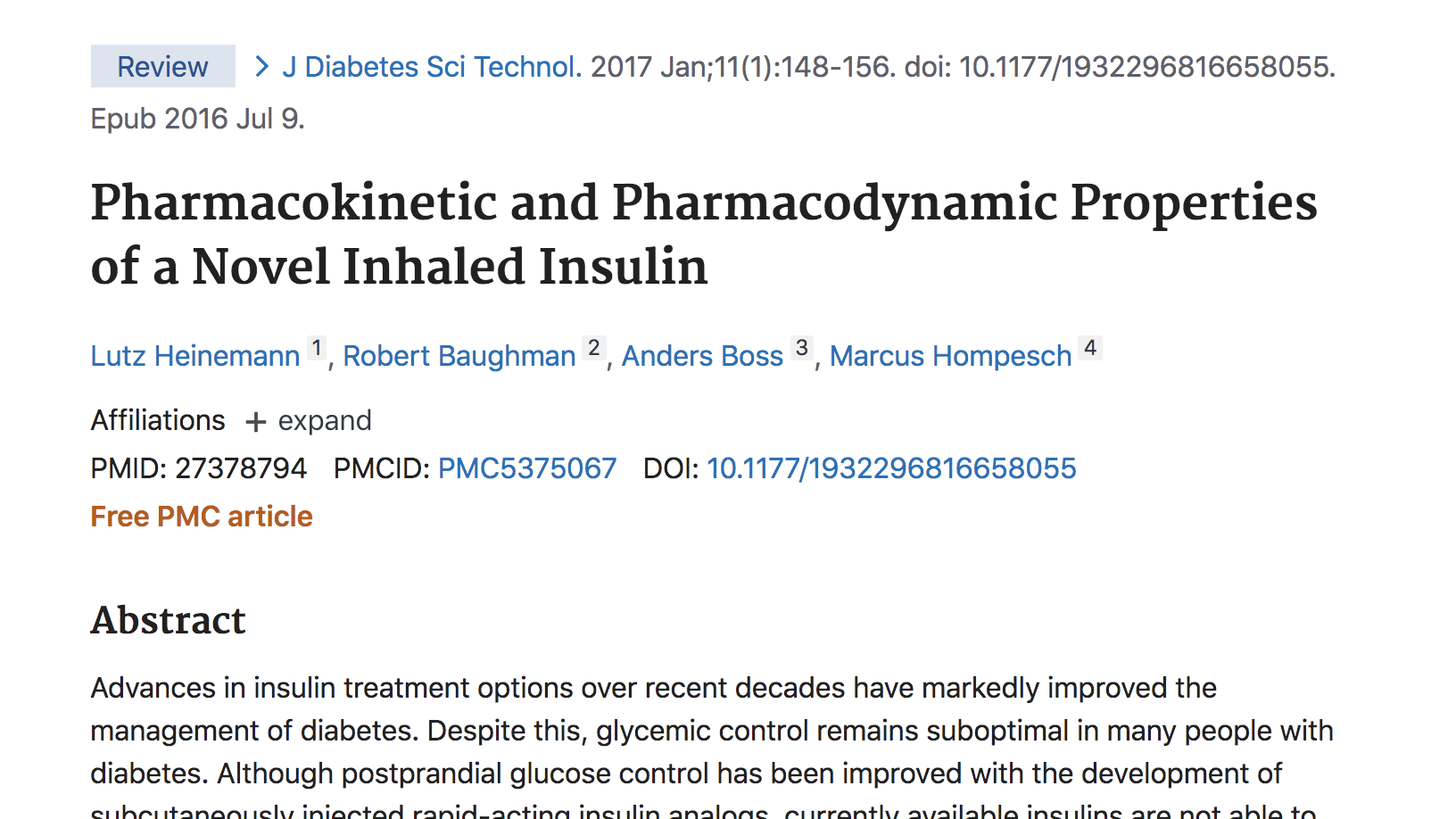About This Article
Advances in insulin treatment options over recent decades have markedly improved the management of diabetes. Despite this, glycemic control remains suboptimal in many people with diabetes. Although postprandial glucose control has been improved with the development of subcutaneously injected rapid-acting insulin analogs, currently available insulins are not able to fully mimic the physiological time-action profile of endogenously secreted insulin after a meal. The delayed onset of metabolic action and prolonged period of effect induce the risk of postprandial hyperglycemia and late postprandial hypoglycemia. A number of alternative routes of insulin administration have been investigated over time in an attempt to overcome the limitations associated with subcutaneous administration and to provide an improved time-action insulin profile more closely simulating physiological prandial insulin release. Among these, pulmonary insulin delivery has shown the most promise. Technosphere® Inhaled Insulin (TI) is a rapid-acting inhaled human insulin recently approved by the FDA for prandial insulin therapy. In this article we discuss the pharmacokinetic and pharmacodynamic properties of TI, and, based on key studies performed during its clinical development, the implications for improved postprandial glucose control.



